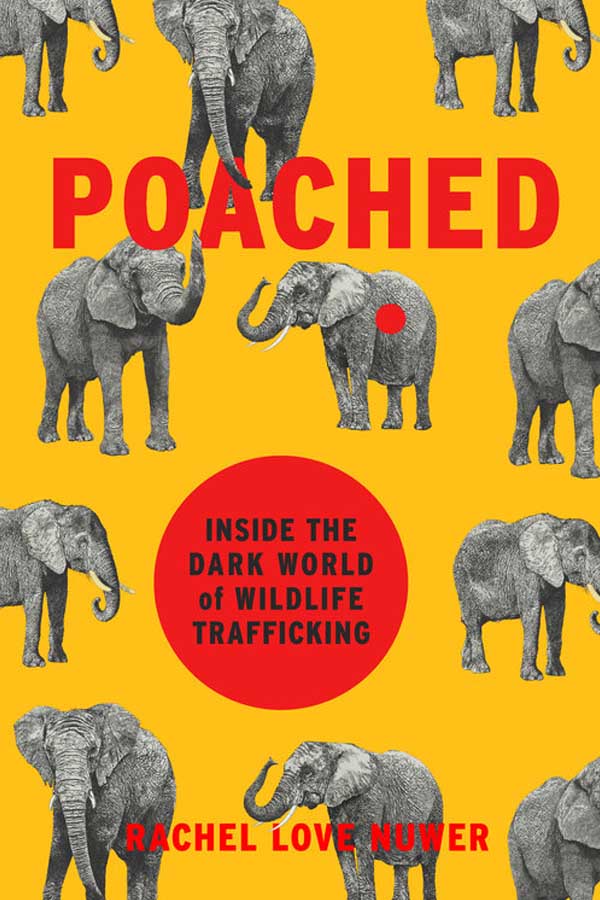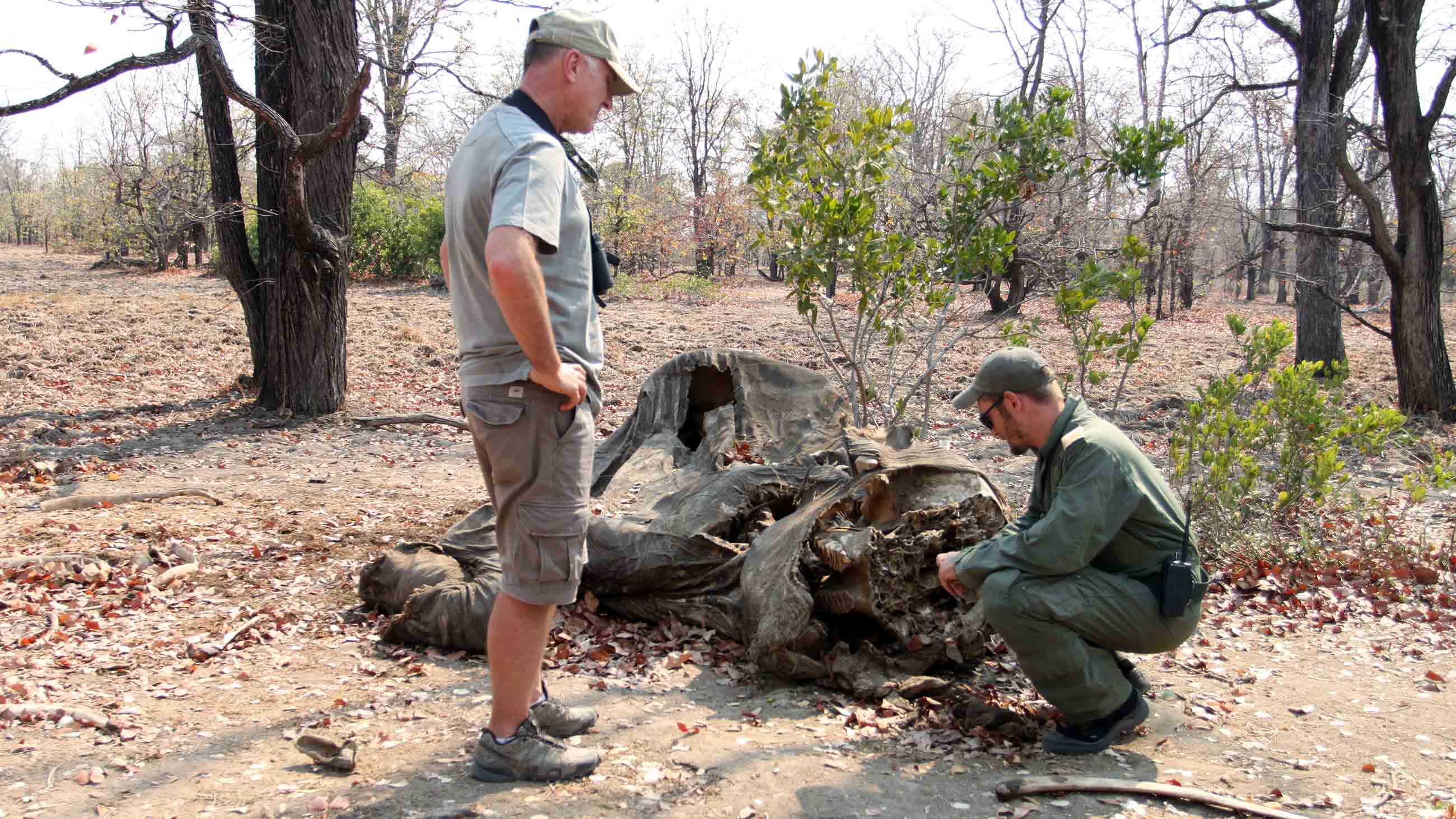It was my first time in a helicopter. As the red, doorless Robinson R44 lifted wobbly above the African tree line, kicking up a thick cloud of dust in its wake, I couldn’t help but notice that my frayed nylon seatbelt was the only thing holding me back from the vast, dry forest of Malawi’s Liwonde National Park below.

WHAT I LEFT OUT is a recurring feature in which book authors are invited to share anecdotes and narratives that, for whatever reason, did not make it into their final manuscripts. In this installment, science journalist Rachel Love Nuwer shares a story that was left out of “Poached: Inside the Dark World of Wildlife Trafficking” (Da Capo Press).
The pilot, a young South African named Bradley Reid, was wearing a green flight jacket, green hat, black boots and sporty black sunglasses — “A real cowboy,” in the words of our other passenger, Otto Werdmuller Von Elgg, who patted me on the shoulder from the backseat.
“Here we go!” Reid said over the headphones that allowed us to hear each other over the roar of wind. My heart beat frantically as we quickly gained altitude, the earth spiraling farther and farther below.
The chopper lurched to and fro as the wind created an invisible Tilt-a-Whirl. What looked like an approaching coil of smoke turned out to be a dust devil — an angry mini-cyclone of leaves, sand, and debris that shook us like a bartender making a martini.
We were just beginning our aerial tour of the park, a wildlife refuge about the size of Chicago where anti-poaching drones were being tested by UAV and Drone Solutions (UDS), a South Africa-based company co-founded by Von Elgg.
From 2014 to 2016, poachers killed at least 50 elephants and two rhinos in Liwonde National Park and hunted down many other animals for bushmeat. Desperate for a solution, in 2015 Malawi enlisted the help of African Parks, a nonprofit organization based in South Africa that specializes in rehabilitating struggling national parks. During its first year, the African Parks team pulled out some 18,000 illegal snares and 40 bear traps, and contributed to the arrest of 10 men for ivory and rhino horn-related offenses. But the killings hadn’t ceased entirely, and at the time of my visit during the dry season of 2016, the park’s management was considering the use of drones to help curb the slaughter.
Taking deep, long breaths, I eventually began to relax on the roller coaster ride and absorb the stunning landscape. We shot over the Shire River, where a herd of 30 elephants nonchalantly loitered below, unfazed by our presence, while a flock of egrets scattered around them. “This place is a different world in the rainy season,” Reid said. Indeed, from above the river was a vein of blue and green amidst an otherwise bone-dry palate of yellows, browns, and oranges.
Reid dipped low to point out a burned-out illegal fishing boat. It had been destroyed by rangers and left as a warning sign to others who might violate the park’s boundaries. Minutes later, we flew over the closest village, where a dozen or so large green and blue nets were splayed out on the shore to dry. “Those are mosquito nets that they use for fishing, and they catch everything, no matter how big or small,” Reid said.
“That’s a full-on commercial operation,’’ he added. “They’re not just fishing for their families. There’s massive overfishing here.”
We hung a right, heading toward the park’s boundary. It was visible less for the fence that separated it from the sparse homes outside than for the stark contrast in vegetation. Within, there were trees; outside, just puffs of sickly yellow grass and patches of bare, eroded earth. Yet some of the homes just next to the boundary had metal roofs glinting in the sun — a sign of wealth.
“This area has very poor soil, so immediately those people are suspect,” Reid said. “How’d they get the money for those roofs?” Most of the elephant poachers, I remembered being told, came from the surrounding communities.
Reid circled back toward the park’s core, peering into the bush as he took the helicopter into a low hover. “I know it’s around here somewhere,” he said.
“What is?” I asked.
“The elephant carcass.”
Squinting at the ground, I suddenly spotted a deflated gray balloon, fallen amid piles of withered brown leaves and pale, skeletal trees. Though I had been reporting on the poaching crisis in Africa and Asia for years, it was the first time I had seen a victim of the illegal trade in person.
Reid gently brought down the helicopter nearby. In the rainy season, the area is water-bogged, he said, pointing to frisbee-sized hardened pockmarks of elephant footprints, made when the landscape was all mud. But while the animals who left those indentations had long since safely passed through, the one splayed out in front of us had not.
Though killed by poachers for its tusks three or four months ago, the stench of the carcass hit me hard. Its reek was sweet and pungent, and the buzzing flies were prolific. The elephant’s skin, leathery from time and sun, was draped over it like a wrinkled blanket, intact save for a couple of holes near its neck and rear leg.
“This elephant was a male, about 40 years old — I can tell by his teeth,” Reid said. “Males are easier to shoot because they’re isolated, whereas a breeding herd that’s attacked will make a lot of noise and even charge.”
The elephant appeared to have been running when he fell, his outstretched legs, even in death, seemingly reaching for escape. As with many poached elephants, his face had been completely hacked away, leaving a grotesque cavity of bone and dried tissue where his eyes and trunk had once been. Only his hairy chin remained. Ribs were scattered about like voodoo throwing bones and one large, petrified ear sat a few feet away like a lost hubcap.
“Mainly, people here use high caliber rifles,” Reid said. “But one elephant we found had received 17 rounds from an AK-47. When I arrived here initially, it was just like, down-go, down-go, down-go — it was gun shots, illegal fishing, fence incursions. It was a non-stop Shoprite for poachers. Now, in comparison, it’s like sitting in a hammock. It’s more reaction, operation-based stuff. But that doesn’t mean it’s solved. Now, most of the shooting takes place at night.”
“There’s got to be consequences,” Von Elgg said, seemingly to himself. “It’s a free for all.”
“Did you catch the guy who killed this elephant?” I asked.
“We think we did, yes.”
I was beginning to feel a bit ill. The smell was overwhelming.
“Shall we go?” Reid asked. We quietly climbed back into the helicopter, each of us lost in thought. As we ascended, I kept my eyes on the hollowed-out shell of the sad, old elephant, until the forest swallowed his remains from view.
Rachel Love Nuwer is an award-winning freelance science journalist whose writing has appeared in The New York Times, National Geographic, Scientific American, BBC Future, and elsewhere.










